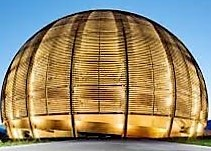Speaker
Description
The $^{6}$Li(p, $\gamma$)$^{7}$Be reaction is involved both in Big Bang Nucleosynthesis and $^{6}$Li depletion in pre-main and in main sequence stars.
The $^{6}$Li(p, $\gamma$)$^{7}$Be S-factor trend was poorly constrained at astrophysical energies because of conflicting experimental results reported in literature. A recent direct measurement, indeed, found a resonance-like structure at E$_{c.m.}\,$=$\,$195 keV, corresponding to an excited state at E$_{x}\sim\,$5800 keV in $^{7}$Be which, however, has not been confirmed by either other direct measurements or theoretical calculations.
In order to clarify the existence of this resonance, a new experiment was performed at the Laboratory for Underground Nuclear Astrophysics (LUNA), located deep underground in Gran Sasso Laboratory. Thanks to the extremely low background environment, the $^{6}$Li(p, $\gamma$)$^{7}$Be cross section was measured in the center-of-mass energy range E$\,$=$\,$60-350 keV with unprecedented sensitivity. No evidence for the alleged resonance was found. LUNA results was confirmed by latest published indirect determination of $^{6}$Li(p, $\gamma$)$^{7}$Be S-factor.
In the talk a detailed description of the experiment and of the final results will be provided.
